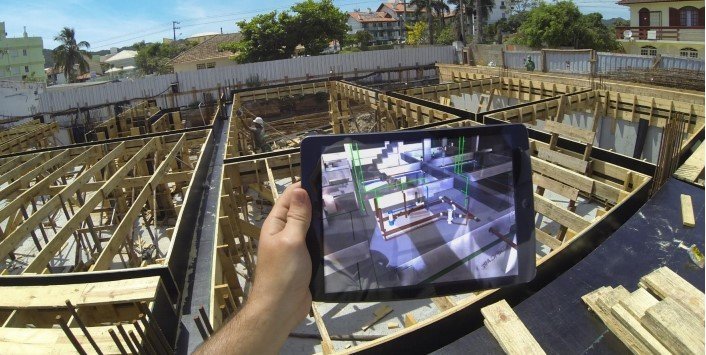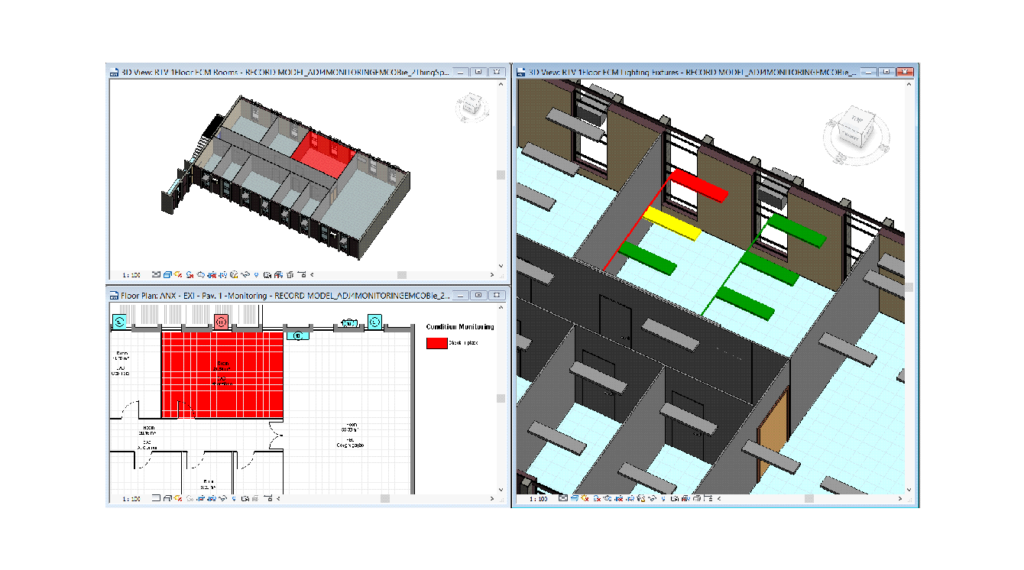In the dynamic world of construction and project management, the integration of innovative technologies and methodologies has proven essential to achieve superior efficiency and quality. The combination of BIM Management with the agile project management methodology Scrum emerges as a powerful solution to tackle contemporary challenges in the industry. This integrated approach not only facilitates coordination and communication among teams but also optimizes the planning, execution, and monitoring processes of projects. In this post, we will explore how the fusion of these two practices can transform the way construction projects are managed, providing greater flexibility, predictability, and success in deliveries.
What is the Scrum Project Management Methodology?
According to Ken Schwaber and Jeff Sutherland, the Scrum Project Management Methodology is an agile framework used to manage complex projects, primarily in software development but also applicable to other sectors. Scrum promotes breaking down the project into short and iterative cycles called sprints, typically lasting two to four weeks.
During each sprint, a multidisciplinary team works on a specific set of tasks with the aim of delivering functional increments of the final product. Scrum emphasizes collaboration, flexibility, continuous improvement, and rapid adaptation to change. Key elements of Scrum include defined roles (such as Product Owner, Scrum Master, and the development team), regular events (such as daily stand-ups, sprint reviews, and retrospectives), and specific artifacts (such as the product backlog and sprint backlog).

What are the main characteristics of the Scrum Project Management Methodology and how do they relate to BIM Management?
The Scrum Project Management Methodology has several key characteristics that make it an agile and effective approach to project management. These characteristics are particularly relevant when integrated with BIM Management:
Short and Incremental Iterations (Sprints): Work is divided into short and repetitive cycles called sprints, lasting two to four weeks. Each sprint results in an increment of the functional product. BIM Management benefits from this incremental approach, allowing for continuous reviews and improvements of the BIM model throughout the project lifecycle. This facilitates agile detection and correction of issues.
Defined Roles: Includes roles such as Product Owner (responsible for the product backlog and priorities), Scrum Master (process facilitator), and the development team (those who execute tasks). In the BIM context, these roles can be adapted to include the BIM Manager, BIM Coordinator, and BIM Modelers, ensuring clarity in responsibilities and efficient communication.

Transparency and Communication: Promotes daily stand-up meetings, sprint reviews, and retrospectives to ensure transparency and continuously improve the process. Integration with BIM favors transparency by allowing all stakeholders to access and visualize the updated BIM model in real-time, facilitating communication and collaboration among teams.
Product Backlog and Sprint Backlog: The product backlog is a prioritized list of everything needed for the project, while the sprint backlog details the work to be done during each sprint. In BIM management, the backlog can include specific tasks related to the development and updating of BIM models, ensuring that all requirements and deliverables are clearly defined and prioritized.
Adaptation and Flexibility: Emphasizes the ability to adapt quickly to changes, responding to new information and requirements throughout the project. Scrum’s flexibility is complemented by BIM, which allows for quick adjustments to digital models, incorporating design changes or new requirements without compromising project progress.
Focus on Value Delivery: Each sprint should result in an increment of the product that adds value to the final project. The use of BIM allows for visualization and simulation of project increments in each sprint, ensuring that each delivery adds tangible value to the client and the project as a whole.
What are the Main Benefits of Integrating the Scrum Project Management Methodology with BIM?
Integrating the Scrum Project Management Methodology with BIM offers several significant benefits that enhance efficiency and quality in construction project management. Some of the key benefits include:
Improved Communication and Collaboration: Together, they facilitate clear and collaborative communication, allowing all stakeholders to stay updated on project progress and potential changes.
Flexibility and Adaptation: The combination enables agile adaptation to changes, minimizing rework and keeping the project aligned with updated objectives and requirements.
Improved Quality and Error Reduction: Results in continuous improvement of project quality and reduction of errors and rework through continuous reviews and retrospectives, optimizing resources and costs.
Continuous Value Delivery: Ensures that the project is constantly adding value to the client and stakeholders, aligning incremental deliveries with end-user expectations and needs.
Efficiency in Planning and Execution: Structures work into short and manageable cycles, facilitating planning and execution, and allowing better control of schedules and budgets.
My company uses the Scrum Methodology for Project Management, but wants to integrate it with BIM, what should I do?
There are a series of priorities that should be considered when making this integration. However, this varies according to the type of service being provided by the company.
Here, I will cite three different examples related to the Construction universe, being: Drafting projects of different disciplines, Works Management, and Assets Management.
1. Company of Drafting Projects of Different Disciplines

For a company of Drafting Projects of Different Disciplines, when integrating the Scrum Management Methodology with BIM, the priorities to be considered, in my view, are the following:
Establish Efficient and Collaborative Communication: Ensure that all team members and stakeholders are aligned, understand their responsibilities, and can collaborate effectively. To do this, you can take the following actions:
1. Regular Coordination Meetings: Establish regular coordination meetings between different multidisciplinary teams to discuss progress, identify and resolve obstacles, and align sprint activities.
2. Unified Communication Platform: Use tools like Microsoft Teams, Slack, or another collaborative platform that allows continuous communication, document sharing, and integration with BIM and agile management tools.
3. Transparent Documentation: Maintain a centralized repository of documentation accessible to all, including manuals, processes, and meeting records, to ensure that all stakeholders can access important information at any time.
Synchronization of Tools and Processes: Integrate BIM tools with agile management tools to create a harmonious and efficient workflow. To do this, you can take the following actions:
1. Choose Compatible Tools: Select software tools that offer compatibility and integration with BIM and Scrum.
2. Workflow Automation: Implement scripts, plugins, or APIs that automate data transfer between BIM and Scrum platforms, minimizing the need for manual data entry and reducing errors.
3. Integrated Backlogs: Create and manage a product backlog that includes specific BIM tasks, allowing them to be tracked and prioritized within sprints. Ensure that the sprint backlog is detailed and contains all tasks necessary for each cycle.
Continuous Monitoring and Improvement of Integration: Continuously monitor the performance of the integration and make iterative improvements to optimize processes and achieve better results. To do this monitoring, you can use:
1. KPIs and Metrics: Define and monitor specific KPIs to measure the efficiency of the Scrum-BIM integration, such as response time to changes, number of conflicts detected and resolved, sprint compliance rate, and quality of deliveries.
2. Sprint Reviews: Conduct detailed sprint reviews where BIM increments are presented, evaluated, and discussed with stakeholders. Use this feedback to adjust priorities and continuously improve.
3. Retrospectives: Conduct retrospective sessions at the end of each sprint to assess what worked well and what could be improved. Encourage the team to suggest improvements in processes and tools used.
2. Construction Management Company

For a Construction Management company, when integrating Scrum Project Management Methodology with BIM, the three priorities to consider, in my view, are as follows:
Coordination and Alignment of Multidisciplinary Teams: Ensure that all teams involved in the project (architecture, engineering, construction, etc.) are well coordinated and aligned with the project’s objectives. To achieve this, you can take the following actions:
1. Regular Coordination Meetings: Establish regular coordination meetings among different multidisciplinary teams to discuss progress, identify and resolve conflicts, and align activities for each sprint.
2. Clear Roles and Responsibilities: Clearly define roles and responsibilities within the teams, both for Scrum and BIM. Ensure that everyone knows who is responsible for each task and how their activities interrelate.
3. Integrated Collaboration Tools: Utilize tools that facilitate collaboration among teams, enabling visualization and coordination of BIM models along with Scrum tools for managing tasks and sprints.
Continuous Monitoring and Conflict Resolution: Continuously monitor project progress and efficiently resolve conflicts to avoid delays and rework. To achieve this, you can:
1. Conflict Detection and Management: Implement processes for early detection of conflicts in the BIM model, using clash detection tools and coordination.
2. Real-Time Feedback: Establish a continuous feedback system where the team can report issues and obtain quick solutions. Daily Stand-up meetings are essential for identifying problems immediately.
3. Sprint Reviews and Model Updates: Conduct regular sprint reviews to present BIM model progress, review and update models as necessary, and adjust the backlog based on stakeholder feedback.
Continuous Improvement and Process Adaptation: Promote a culture of continuous improvement by adapting Scrum and BIM processes to optimize project efficiency and quality. To do this, you can take the following actions:
1. Retrospective Sessions: Conduct retrospectives at the end of each sprint to evaluate what worked well and identify areas for improvement. Use feedback to adjust integration processes between Scrum and BIM.
2. KPIs and Metrics: Define and monitor specific KPIs to measure the efficiency of the Scrum-BIM integration, such as conflict resolution time, sprint completion rate, and delivery quality.
3. Training and Development: Invest in continuous training for the team, ensuring that everyone is up to date with Scrum and BIM best practices, and familiar with the tools and processes used.
3. Company specializied in Asset Management

For an Asset Management company, when integrating Scrum Project Management Methodology with BIM, the three priorities to consider, in my view, are as follows:
Strategic Alignment and Task Prioritization: Ensure that the strategic objectives of asset management are aligned with Scrum and BIM activities, prioritizing tasks that add value to the asset lifecycle. To achieve this, you can take the following actions:
1. Objective Mapping: Work with stakeholders to clearly map the strategic objectives of asset management and how they translate into specific requirements for BIM.
2. Strategy-Aligned Backlog: Create a product backlog that reflects these objectives, prioritizing tasks that directly impact asset efficiency, maintenance, and operation.
3. Planning Meetings: Conduct sprint planning meetings focusing on prioritizing tasks that support asset management, such as updating BIM models with maintenance data, inspections, and necessary improvements.
Integration of Data and Asset Management Tools: Ensure efficient integration between BIM tools and asset management platforms for holistic and informed asset management. To achieve this, you can:
1. Software Integration: Utilize solutions that allow direct integration between BIM models and asset management systems (CMMS – Computerized Maintenance Management System or CAFM – Computer-Aided Facility Management).
2. Continuous Data Updating: Ensure that BIM models are continuously updated with real operational and maintenance data, promoting an accurate and updated view of assets.
3. Workflow Automation: Implement automated processes to synchronize data between BIM and asset management platforms, minimizing manual data entry and reducing the possibility of errors.
Performance Monitoring and Continuous Improvement: Continuously monitor asset performance and Scrum-BIM integration processes, promoting a culture of continuous improvement. To perform this monitoring, some actions to take may include:
1. KPIs and Dashboards: Define specific KPIs to measure asset performance and the efficiency of integration processes, such as downtime, maintenance cost, compliance with maintenance plans, and sprint delivery quality.
2. Continuous Feedback: Establish continuous feedback channels with all stakeholders, including maintenance, operation, and project management teams, to identify areas for improvement.
3. Retrospective Sessions: Conduct retrospectives at the end of each sprint to evaluate what worked well and what can be improved, adjusting processes and practices as necessary.
The Synergy between BIM and Scrum as a Catalyst for Innovation in the Construction Industry
The integration of BIM Management with Scrum Project Management Methodology represents a significant evolution in how construction projects and asset management are conducted. By combining the precision and efficiency of BIM with the agility and collaboration of Scrum, companies can achieve higher levels of coordination, transparency, and flexibility.
This integrated approach not only improves the quality and timeliness of deliveries but also promotes a culture of continuous improvement and rapid adaptation to changes, essential in a dynamic environment like the construction industry. Thus, by adopting this powerful combination, companies position themselves at the forefront of innovation, ready to tackle future challenges with more robust and effective strategies.




Deixe um comentário